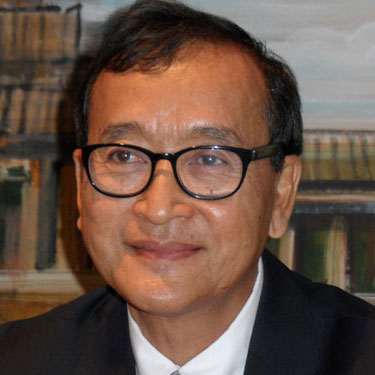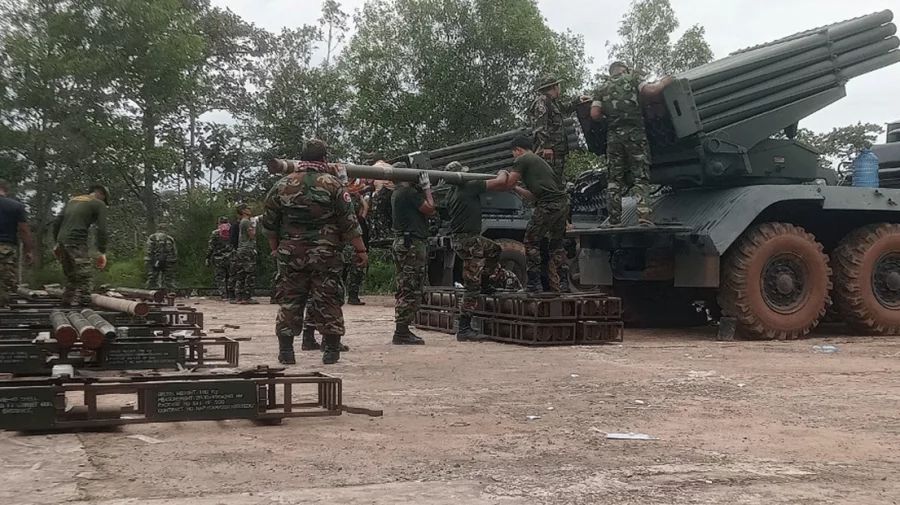Since May 2025, Cambodia and Thailand have been engaged in an armed conflict of unprecedented intensity in recent decades. Officially triggered by border tensions in disputed areas, the conflict cannot be reduced to a simple territorial disagreement. It reflects a complex interplay of historical, political, economic, and personal factors.
The current Cambodian regime, dominated by Hun Sen’s family for over forty years, lies at the heart of this conflict dynamic. The war highlights the nature of power in Phnom Penh, while reviving age-old geopolitical logics in which Cambodia, throughout the centuries, has owed its survival to its role as a buffer state between rival powers. The crisis today raises a fundamental question: can Cambodia continue to cling to an authoritarian, dynastic mode of governance in a region undergoing profound transformation?
1. Historical Background: Cambodia Between Siam and Annam
For centuries, Cambodia’s very survival as a state depended on the antagonistic relations between its two powerful neighbors: Siam (modern-day Thailand) to the west and Annam (modern-day Vietnam) to the east. These two kingdoms/empires repeatedly sought to subjugate Cambodia, causing continuous fragmentation of its political authority.
A key episode is the Siamese expedition led by General Bodin in the 19th century, during which Cambodia, weakened and vulnerable, oscillated between competing hegemonies. It took French colonial intervention at the end of the 19th century to stabilize and preserve this small kingdom. Without the French protectorate established in 1863, Cambodia might have disappeared from the regional map.
2. Persistent Geopolitical Dependence Since Independence
The independence obtained in 1953 under King Norodom Sihanouk did not eliminate Cambodia’s geopolitical dependence. On the contrary, the Cold War turned the country into a proxy battleground for global and regional powers. Since then, Cambodia has constantly had to navigate the influence of Vietnam, Thailand, China, and the United States.
Hun Sen’s regime, installed by Hanoi in 1979 after the fall of the Khmer Rouge, gradually distanced itself from Vietnam and began a balancing act between Beijing, Washington, and Bangkok. However, these successive alignments never removed Cambodia’s fundamental vulnerability, as the country remains the region’s geopolitical weak link.
3. A Political and Familial Rivalry Between Phnom Penh and Bangkok
The current conflict is exacerbated by a personal rivalry between two political dynasties: the Hun family in Cambodia and the Shinawatra family in Thailand. Once close—Hun Sen once described Thaksin Shinawatra as his “adoptive brother”—the two clans are now bitter enemies.
On June 26, 2025, Thai Prime Minister Paetongtarn Shinawatra visited Sakaeo province and publicly labeled the Cambodian border town of Poipet a major hub for cross-border online scam networks. This comment directly targeted the Hun regime, widely accused of tolerating and even profiting from these operations.
The reaction from Phnom Penh was immediate. On June 27, Hun Sen delivered an unusually long and heated televised speech, accusing Thaksin of failing to “educate his daughter” and of disrespecting “the second most important person in Cambodia, after the King.” This verbal escalation laid bare the personal animosity driving interstate tensions.
For deeper analysis on this dynastic dimension, see my earlier article: Dynastic Politics and Governance Crisis in Southeast Asia: The Case of Thailand and Cambodia (The Geopolitics).
4. Online Scams and the Criminal Economic Lifeline
In recent years, the Thai-Cambodian border region has become the epicenter of online scam networks that defraud victims across Asia and other parts of the world. These scams are orchestrated from guarded compounds often operated with local protection, generating massive revenues.
For the Hun regime, this shadow economy has become an essential financial lifeline. In the face of international sanctions and declining aid, the illicit flow of money sustains Cambodia’s patronage system. Thailand’s efforts in 2025 to dismantle these networks have been interpreted in Phnom Penh as a direct economic and political threat.
Hun Sen’s regime has responded by reframing Thai enforcement measures as nationalist provocation, masking the real stakes of financial survival behind a rhetoric of sovereignty.
This connection between illicit economies and authoritarian survival was explored in my article: Criminal Networks, Not Patriotism: The True Source of Hun Sen’s Fury Toward Thailand (The Geopolitics).
5. Hun Sen’s Failed Strategy to Divide Thai Elites
In response to Thai pressure, Hun Sen has sought to exploit internal political divisions in Thailand. He has attempted to pit the royalist-military establishment against the Shinawatra-led Pheu Thai party, expressing hope for the return of General Prayuth Chan-o-cha as Prime Minister.
Hun Sen even began leaking alleged private criticisms of the Thai monarchy made by Thaksin during their past friendship. But rather than divide Thai elites, this maneuver backfired: it sparked rare unity among Thai political, military, and royalist factions, all now seeing Hun Sen as a vile and shared adversary.
6. A Conflict That Could Destabilize Hun Sen’s Regime
This conflict risks destabilizing the very foundations of the Hun regime. Built on dynastic control, personal loyalty, and entrenched corruption, the system in Phnom Penh is ill-equipped to manage a long-term crisis or negotiate a peaceful resolution.
The personalized nature of power in Cambodia, the use of public institutions for private enrichment, and the reliance on criminal revenues form a model that is increasingly out of sync with regional dynamics that favor rule-based cooperation.
Conclusion: Toward a New Regional and Political Equilibrium?
Regardless of the military outcome or peace negotiations, Cambodia cannot return to the status quo. A new political balance is inevitable. This will likely require the formation of a new government acceptable not only to Cambodians but also to regional powers—Vietnam, Thailand, China—and to the United States.
This scenario echoes the 1991 Paris Peace Agreements, which envisioned Cambodia as a neutral, independent, and democratic state. Preserving the spirit of those accords remains essential for achieving a durable peace.
Ultimately, the war now raging on Cambodia’s borders is also a war for political transformation. The era of unaccountable personal power may be drawing to a close. Cambodia is entering a new historical phase in which it must redefine its role among neighbors and rediscover sovereignty through law, transparency, and peace.
[Photo: AFP]
The views and opinions expressed in this article are those of the author.

Sam Rainsy, Cambodia’s finance minister from 1993 to 1994, is the co-founder and acting leader of the opposition Cambodia National Rescue Party (CNRP).

